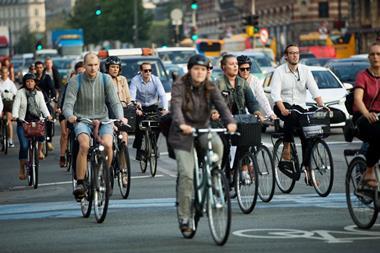Nothing screams policy forward-sliding like a solar sector unleashed, permanently beating scenario expectations
The German climate headlines in March looked at first like a misprint, an early April Fool’s joke. “Germany on track to meet its 2030 climate goals, says German Environment Agency”. Say what now? Climate policies that are on track. Does such a thing even exist? Some may think policymakers meeting climate targets is the equivalent of meeting Bigfoot. We may have seen blurry images in our dreams, but nobody has ever been able to spot such a thing in the wild.
Of course, conventional wisdom wants us to believe that the opposite feels like a daily occurrence. Backsliding passes as the ‘nom de guerre’ of climate policymakers, a permanent, frustrating feature of the climate movement, or so it seems. And you can be assured that when it does happen, the media jumps on it. It is this phenomenon that causes many to doubt government’s net zero targets.
An analytical assessment of the situation however reveals that – globally – the opposite is true. Since Paris in 2015, policymakers have engaged in a permanent virtuous cycle of ‘forward-sliding’. Consider that International Energy Agency (IEA) analysis suggests that the temperature outcome associated with “current policies” has fallen from 3.6°C in 2015 to 2.4°C in 2023. The IEA now predicts emerging markets will “overperform” their Nationally Determined Contribution by over 1 Gigaton, even without additional policy action.
Nothing screams policy forward-sliding like a solar sector unleashed, permanently beating scenario expectations. We cannot both believe in policy backsliding and triple digit percentage misses in solar projections. The two are not compatible.
A bottom-up picture of policy tracking reveals a similar picture. The Inevitable Policy Response’s (IPR) policy-based energy and land transition forecast suggests that net zero CO2 emissions by 2065 is now the most likely outcome – consistent with limiting global warming to well below 2°C.

Underpinning this projection are over 300 high-conviction policy forecasts driven by expert surveys and analysis. IPR’s quarterly tracking of policy progress against its scenario in Q2 2023 found that over 50% of the policies it tracked were consistent with the IPR well below 2°C forecast. Only nine months later, that number has jumped to 60% (Status April 2024).
And even when there is backsliding, it typically is measured in single digit percentage points. When EU Climate Commissioner Wopke Hoekstra announced at the end of March that the European Union would miss its 2030 climate goal, the ‘backsliders’ felt vindicated. But the miss is set to be 4% (51% reduction from 1990 levels rather than 55%). Incidentally, the game isn’t up as the Commissioner remained confident “that we will make [55%]”.
Of course, the picture is more complicated on the other side of the pond. Donald Trump’s election in 2016 left Barack Obama’s Paris Agreement legacy dead on arrival. Despite four years of Trump, however, Obama’s original pledge of 26-28% reduction by 2025 from 2005 levels may similarly be missed by only a few percentage points. Joe Biden has promised twice that rate by 2030.
There is no doubt that a second Trump term will leave this ambition in tatters and that even another Biden term may very well fall short too. But again, the question is the grading matrix. if the Inflation Reduction Act does not represent policy forward-sliding relative to what people actually believed US policy capable, we don’t know what does, not the least given the global policy acceleration it has helped spark.
This isn’t a restaurant bill where you split the difference, small percentage differences matters for our collective climate future. Every ton of decarbonisation counts, not the least in future climate mortality.

But from a temperature perspective, the story is clear. Policy forward-sliding far outweighs backsliding. The backsliding that does happen is counted in single digits in almost all cases, whether it’s years or percentage decarbonisation.
Of course, part of the reason why we think backsliding dominates is because we benchmark policy performance against the stated 1.5°C no overshoot stretch goal of the Paris Agreement. If you take that as the policy baseline we are drifting further away from it by the day. While IPR is optimistic on alignment towards well-below 2°C, only 3% of tracked policies are pointing towards 1.5°C.
There is perhaps no policy world quite like the climate world, where policies are permanently set in relation to a normative constraint and actually measured against that constraint. Sure, policymakers will speak of ending homelessness, but when homelessness is halved, we can recognise and appreciate progress, even if short of lofty goals.
For climate, we don’t seem to provide that privilege. And indeed, this is obviously in no small part the fault of climate policymakers, who insist on defining goals knowing they won’t be achieved, recognising the ‘impossible’ is unfortunately also the ‘just’. And so when policy bends the temperature pathway by +1°C in less than a decade, when bottom-up policy implementation runs ahead of high-level targets in many regions, when the IEA has to increase its renewable projections by +30% between 2021 and 2022 and then +30% again in its 2023 forecast, it may be time to adjust our priors and expectations.
Policymaking will remain messy, two steps forward, one backward, three sideways and then three forward again. The mega-election year will no doubt throw some policy dynamics into doubt. It would be absurd to think otherwise. But that should not hide the very different climate world policymakers have helped create. Maybe time we gave them some credit for it. And time for companies and investors to realize that the transition is shaping up to be inevitable.
Kavita Srinivasan is head of operating group, while Jakob Thomä is head of research, at Inevitable Policy Response

























.jpg)






No comments yet